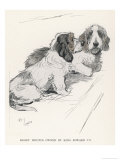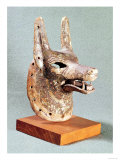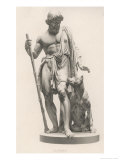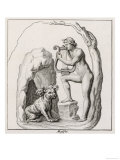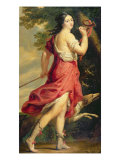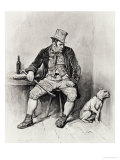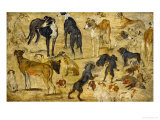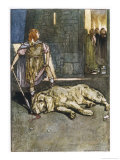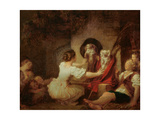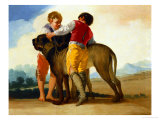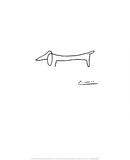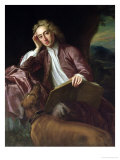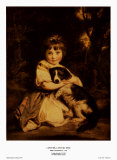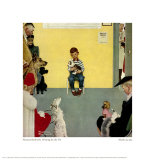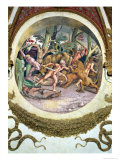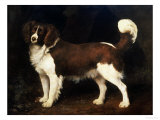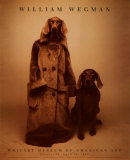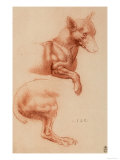|
|
|
|
|
|
In Egyptian mythology Anubis, portrayed as a jackal, or a human with a jackal head, is the god who accompanied the dead to the underworld.
The jackal is an African, Asian and Southeastern Europe species of the genus Canis, and a savenger, hence the association with death during the Old Kingdom. His importance was replaced by Oriris in the Middle Kingdom period.
FYI - the coyote fills the same ecological niche in North America.
|
|
|
|
Argos is Odysseus' faithful dog who recognized him after an absence of twenty years.
The three headed dog Cerberus guards the gates of Hades.
|
|
|
|
Artemis / Diana
The Greek Goddess Artemis, Latinized Diana, is often portrayed with a hunting dog.
|
|
|
|
Giacomo Balla
b. 7-18-1871; Turin, Piedmont, Italy
d. 3-1-1958; Rome
Giacomo Balla painted in the Futurist style portraying light, movement and speed on a static canvas.
|
|
|
|
Frederick Barnard
b. 1846; London, England
d. September, 1896
The artist Fred Barnard illustrated Charles Dickens' characters in the 1890s.
Bill Sikes, from the novel Oliver Twist, is a vicious man who beats his bull terrier, Bull's Eye, until the dog need stitches.
FYI - Barnard married Alice Faraday, the niece of chemist Michael Faraday. Alice and their children were portrayed by family friend John Singer Sargent.
|
|
|
|
Jan Brueghel the Elder
b. 1568; Brussels
d. 1-13-1625; Antwerp (cholera)
The painter Jan Brueghel the Elder was the son of artist Pieter Bruegel the Elder, the brother of Pieter Bruegel the Younger, and the father of Jan Brueghel the Younger.
|
|
|
|
In Irish mythology Setanta earns the name Cu Chulainn, or the Hound of Culain, after he kills his hosts guard dog in self-defense and assumes the dog's duties - hence the new name.
• Cu Chulainn: Iron Age Hero
|
|
|
|
Jean-Honoré Fragonard
b. 4-5-1732; Grasse, France
d. 8-22-1806; Paris
Rococo period painter Jean-Honoré Fragonard is best remembered for his delicately colored scenes, usually set in gardens, and priviate erotica paintings. His “Education is Everything” is an example of his “genre” paintings of everyday subjects - here children are dressing up dogs and instructing them to “sit up”. Remember this is the time of the late Enlightenment-early Romantic philosopher, author and composer Jean-Jacques Rousseau who considered Emile: or, On Education, to be his most important work.
|
|
|
|
Francisco Goya
b. 3-20-1746; Fuendetodos, Aragón, Spain
d. 4-16-1828; Bordeaux, France
Francisco Jose de Goya y Lucientes was the Spanish Court painter, considered the last of the Old Masters and the first of the moderns.
|
|
|
|
|
|
|
Alexander Pope
b. 5-22-1688; London, England
d. 5-30-1744; Twickenham
Alexander Pope's words - “Histories are more full of examples of the fidelity of dogs than of friends.” may refer to his Great Dane ‘Bounce’, who accompanied him on walks, along with a pair of revolvers in his pockets, after the publication of “The Dunciad” in 1728.
Pope, generally regarded as the greatest English poet of the eighteenth century, is said to be the third most frequently quoted writer in the English language, after Shakespeare and Tennyson.
• The Works of Alexander Pope
|
|
|
|
Joshua Reynolds
b. 7-16-1723; Plympton, Devon, England
d. 2-23-1792; Leicester Fields in London
It is said that in his long life Joshua Reynolds painted as many as three thousand portraits. Miss Jane Bowles with Her Dog is better known as Love Me, Love My Dog.
|
|
|
|
Waiting for the Vet, Norman Rockwell
|
|
|
|
Sirius, also known as the Dog Star, is the brightest star in the night sky and the most prominent star in the constellation Canis Major (Big Dog).
Sirius is also notable for its heliacal rising, just before dawn, a annual marker for what is called the “dog days” of summer.
FYI - The name Sirius is probably related to the Egyptian god Orisis.
|
|
|
|
George Stubbs
b. 8-25-1724; Liverpool, England
d. 7-10-1806; London
George Stubbs, the son of a ferrier (blacksmith) and best known for his portraits of horses, began painting dogs later in life.
Spaniels, a type of gun dog or dog developed to help hunters retrieve game that has been shot, were bred to flush game out of dense brush.
It is thought that spaniels originated from Spain as the word may be derived from Hispania (Spain) or possibly from the French phrase "Chiens de l’Espagnol" (Dogs of the Spaniard).
|
|
|
|
|
|
|
The Pomeranian, often referred to as a Pom, is a breed of dog of the Spitz type, named for the Pomerania region in Central Europe (today part of eastern Germany and northern Poland).
|
|
previous page | top
famous dogs list | dogs anatomy | dog breeds |
famous dogs | DOGS in ART | dog movies | dog motivational posters
|
|
I have searched the web for visual, text, and manipulative curriculum support materials - teaching posters, art prints, maps, charts, calendars, books and educational toys featuring famous people, places and events - to help teachers optimize their valuable time and budget.
Browsing the subject areas at NetPosterWorks.com is a learning experience where educators can plan context rich environments while comparing prices, special discounts, framing options and shipping from educational resources.
Thank you for starting your search for inspirational, motivational, and educational posters and learning materials at NetPosterWorks.com. If you need help please contact us.
|
|
|











